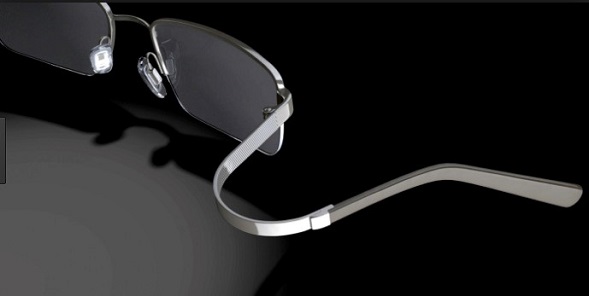The Benefits of Titanium in Eyewear

Join Eric Smith at Stanford Advanced Materials as he explores the advantages of titanium in eyewear with John Miller, a materials expert with extensive experience in the field. This episode covers why titanium has become the go-to material for glasses, from its exceptional strength and lightweight nature to its resistance to corrosion and hypoallergenic properties.
Learn about the different types of titanium used in eyewear, including commercially pure titanium, beta titanium, and memory metal, and how they cater to various lifestyles and needs. Discover how titanium aligns with sustainability trends, offering durability and recyclability in one sleek package.
Curious to learn more about titanium and its impact on modern design? Send an inquiry or connect with us on our social media channels.
Welcome back to the Stanford Advanced Materials podcast! I’m your host Eric Smith. Today, we’re diving into a fascinating topic, titanium and its incredible advantages in eyewear. Joining me to explore this topic is John Miller, a materials expert with extensive experience in the field. John, thanks for being here!
It’s great to be here, Eric. Titanium in eyewear is a topic I’m really excited about. There’s so much to cover, so let’s jump right in.
Absolutely. Titanium has been a game-changer in various industries, but it’s particularly interesting how it’s used in eyewear. What makes titanium such a standout material for glasses?
Well, titanium is celebrated for several key properties. First off, its strength and durability are exceptional. Despite being incredibly lightweight, titanium frames are strong enough to withstand daily wear and tear. This balance is crucial for eyewear, which needs to be both durable and comfortable.
That’s right. And what about its resistance to corrosion? How does that factor into its use in eyewear?
Titanium is highly resistant to corrosion, which means it doesn’t tarnish or degrade over time. This is particularly valuable for eyewear, as it ensures that the frames maintain their appearance and function even when exposed to moisture or sweat. It’s a big advantage for those who live in humid or active environments.
Absolutely. Another key point is that titanium is hypoallergenic. Can you explain why this is important for eyewear?
Definitely. Many people have sensitivities to metals that contain nickel or other allergens. Titanium’s hypoallergenic nature makes it a great choice for those with sensitive skin. It minimizes the risk of irritation, providing a comfortable wearing experience for everyone.
It sounds like titanium has it all—strength, durability, and comfort. But there are different types of titanium used in eyewear. Could you tell us about them?
Of course. There are three main types: commercially pure titanium, beta titanium, and memory metal. Commercially pure titanium is lightweight and durable, making it ideal for everyday wear. Beta titanium is an alloy with vanadium and aluminum, offering excellent strength and flexibility. It’s great for active users who need durable and adaptable frames. Lastly, memory metal, a mix of titanium and nickel, is incredibly flexible and can return to its original shape even after bending or twisting. This makes it perfect for kids and those with very active lifestyles.
Those are some impressive characteristics. How does titanium cater to different lifestyles and needs?
Titanium’s versatility is one of its strongest points. For athletes and active individuals, its strength and flexibility provide a secure and comfortable fit. For children, memory metal frames are especially resilient. And for professionals or fashion-conscious individuals, titanium’s sleek, modern look adds a touch of sophistication while offering top-notch performance.
And there’s also a growing interest in sustainability. How does titanium eyewear fit into this trend?
Titanium is highly recyclable, which aligns well with the sustainability movement. Its durability means fewer replacements, which also reduces waste. Advances in manufacturing techniques further minimize waste, making titanium a more eco-friendly choice overall.
It’s fantastic to see how titanium continues to evolve in terms of both performance and sustainability. Before we wrap up, do you have any final thoughts on the role of titanium in eyewear?
Titanium truly represents the intersection of durability, comfort, and style. It’s a material that not only meets but exceeds the demands of modern eyewear. As technology and design continue to advance, I’m excited to see how titanium will further innovate in this space.
Well said, John. Thanks again for joining us today and sharing your insights on titanium in eyewear.
My pleasure, Eric. It’s been great discussing this with you.
And thank you to our listeners for tuning in. For more information on titanium and other materials, visit our website at Stanford Advanced Materials. Until next time, this is Eric Smith signing off.

